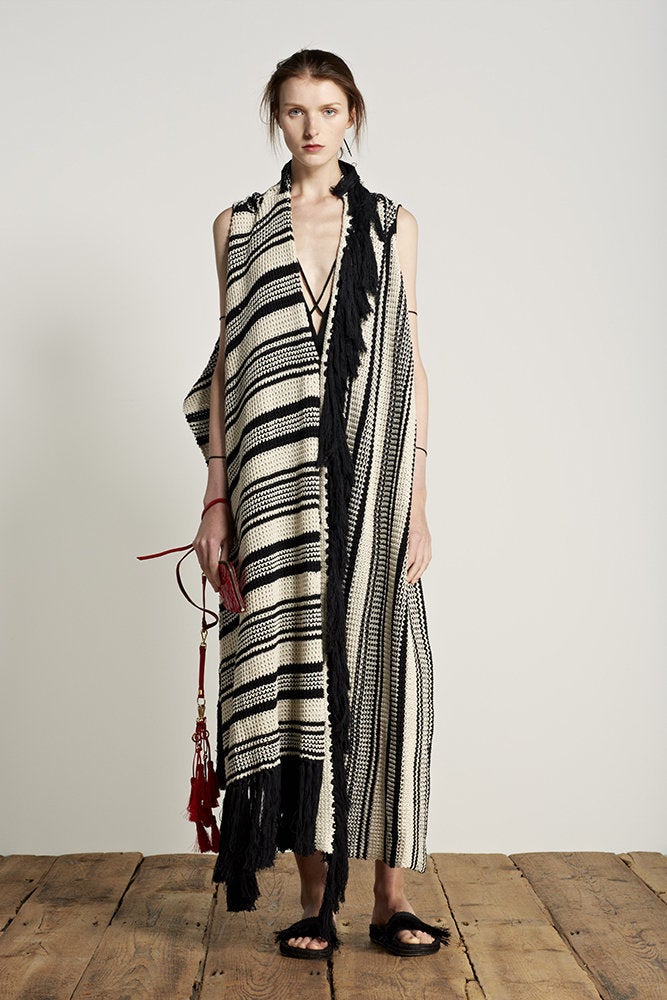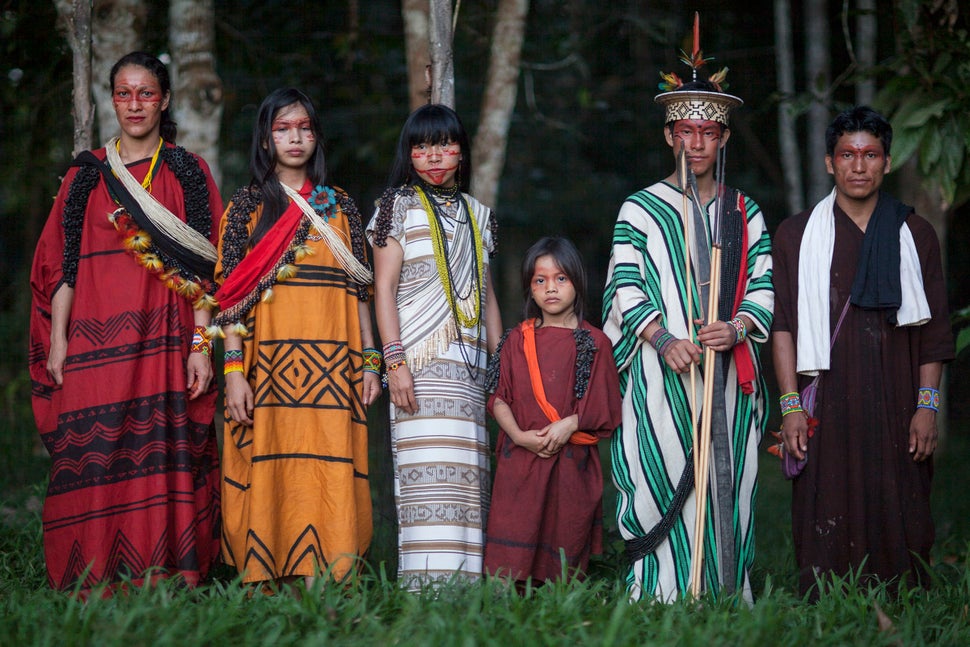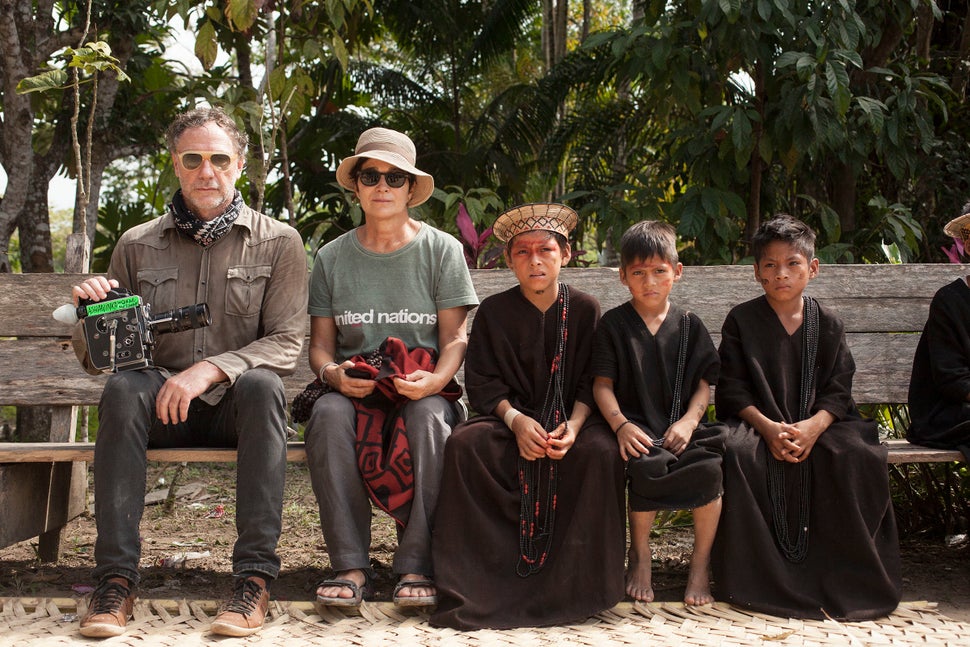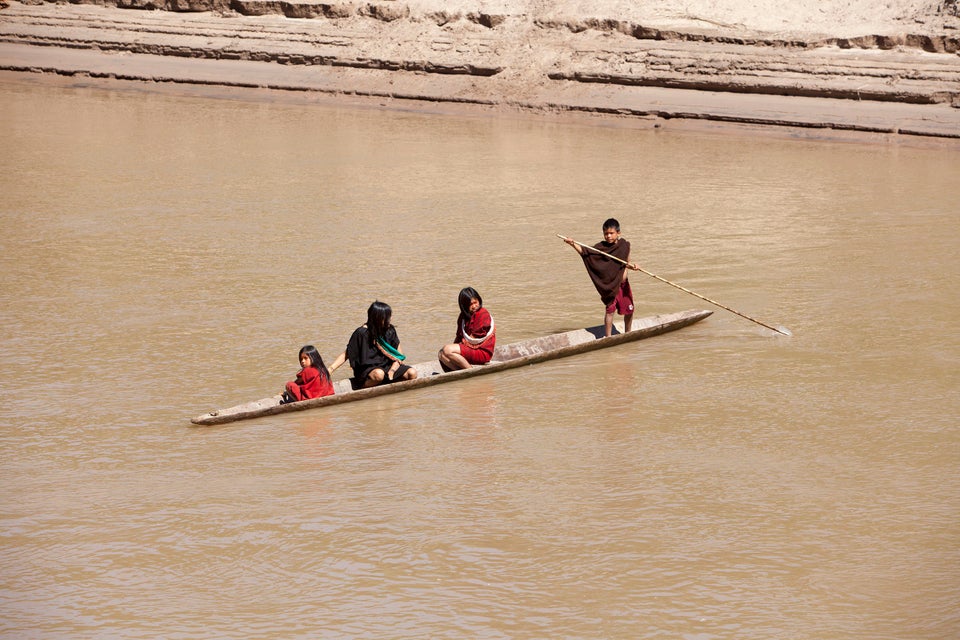
Fixers is a series from What’s Working that profiles the people behind the most creative solutions to big problems.
Halloween season just ended, and brought with it the attendant high times for the cultural appropriation wars.
It will be easy enough to let these questions slip until next October. But really, cultural appropriation is a year-round hustle, and nowhere more so than in the fashion world.
The fashion industry’s breakneck pace of innovation has always prompted designers to incorporate other cultures’ distinctive looks to stay fresh. Just think of Paul Poiret’s harem pants and tunics in the 1910s, Yves Saint Laurent’s beaded and feathered “African collection” in 1967, or Hermes’ stylized Indian saris and jodhpurs in 2007.
The line between inspiration and appropriation is blurry, however, and easily veers, even in 2015, into shockingly tasteless territory. Like in Valentino’s most recent “Africa-inspired” show, where, as Fashionista pointed out, the mostly-white models all sported cornrows, apparently without irony. Cringe.
In light of blunders like these, it seems like the only safe option might be to send out models every season in blue jeans and sneakers.
But there may be a better way to respectfully use other cultures’ designs, and Oskar Metsavaht, founder and creative director of the Brazilian sportswear label Osklen, is leading the pack.
Osklen’s spring 2016 collection, which showed earlier this month in New York and Sao Paulo, was inspired by the designs of the Asháninka, an indigenous people who live in the Brazilian and Peruvian rainforest. In return for permission to adapt their tattoos and traditional fabrics, Osklen paid the tribe. With that money, the Asháninka have been able to make various improvements, including building a school.
Metsavaht is also working to publicize the Asháninka’s fight against illegal loggers and environmental degradation of their native forest. An 18-minute documentary about daily life in the Ashaninka community, directed by Metsavaht (who moonlights as a photographer and musician), is streaming on the Osklen website. And the collection itself is called Ashaninka. You can buy a T-shirt emblazoned with its name.

If this completism seems remarkable, it is, but it is also totally in character for Metsavaht, one of the first designers in the world to produce sustainable fashion. It was in his native Brazil, where countries first convened in 1992 and coined the term "sustainable development," at the UN Earth Summit in Rio de Janeiro. His 2012 collection, called A21, was inspired by the "successes and failures" of that Summit's Agenda 21, as Metsavaht told VICE.
Metsavaht's cerebral design process often comes about in this way, blossoming from a trip, idea or concept. He began his career as a doctor, created a winter sportswear line in 1990, and shifted to luxury fashion in 2000. He was dubbed "Brazil's first global luxury brand" by Forbes in 2012 and is a UNESCO Goodwill Ambassador. He also runs an art studio and Instituto-E, a non-profit that encourages sustainable human development through projects like developing environmentally friendly fabrics.
I spoke to the polymath about his unique take on cultural exchange and how to make eco-fashion cool.

Can you tell us more about the trip you took to meet the Ashaninka people? When did it happen? Where did you stay -- did you live with them in the village?
We went there last June, during the annual festival when the tribe celebrates the demarcation of the indigenous land 23 years ago. Our teams of nine people stayed in some cabins without walls. We slept either in hammocks or in inflatable mattresses on the floor.
Besides payment, what do you think are the elements of responsible borrowing from other cultures, instead of being insensitive/ culturally appropriative?
It’s very important to respect other people’s culture and find a way to reproduce it for the public while taking into account its traditional knowledge. For instance, what we have been doing with the Ashaninka is promoting their battles by disseminating their own best practices toward the preservation of the forest.
What percent of the revenue from this collection is going to the Ashaninka?
Actually, Osklen signed a contract with the tribe in which they received a set amount of money stipulated by the tribe, because they preferred this way. So the Ashaninka were able to plan in advance what investments to make with these funds.

So how are they planning to use this money?
They have already used it for the construction of a new school for the young people in their village and to buy a piece of land where they installed their store, where they sell their artisanal products like necklaces, bracelets, headdresses and clothing. The store is in the major city close to their village, called Cruzeiro do Sul, in the western part of [the Brazilian state] Acre. And also, with another part of the royalties, the Ashaninka constructed a building for the people who attending the Yorenka Atame Center, their School for the Knowledge of the Forests. This school is located in the small village of Marechal Taumaturgo, which is the point from where you take boats to reach the Ashaninka's indigenous land. In this school, indigenous people from other tribes and non-indigenous people take courses of how to manage the forest in a sustainable way.
How much have you managed to donate so far?
Keeping in mind that the exchange rate between American dollars and Brazilian currency is not very favorable these days, it is something around USD $50,000. In Brazilian currency, it’s a lot of purchasing power. Also, on top of that, our contract includes support for the trip of two Ashaninka leaders to the UN Conference on Climate Change. So we underwrote their trip last December to Lima, to take part of the COP-20, and next month we'll take them to Paris, for the COP-21.
What's an easy step that other designers can take to make sure their collections are sustainably sourced?
The first and essential thing to do is to check production conditions, like the environmental and social impact of the process, whether the labor laws are respected, that the management of natural resources involved is not predatory, etc. After these first steps, the designer should envisage the opportunity to do trace the whole production process in order to share it with their public. Today, there are many tools to improve an initiative like this. Osklen did it so through the projects called "TRACES" and "Water TRACES," which we developed with the Italian Ministry for Environment. We tracked ten products from their origin to the store, and this information was offered to the public in a tag outfitted with a QR code.
How do you think we can make sustainable fashion "cool" for other designers?
Whenever we match ethics with aesthetics, it’s very probable that the piece created becomes an object of desire.
Interview text has been edited and condensed.
See some of Oskar Metsavaht's photographs of the Ashaninka people in this slideshow:
